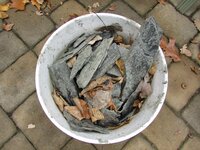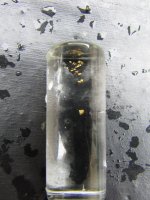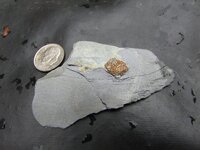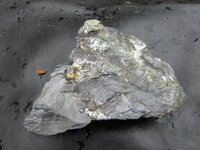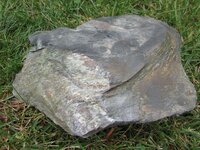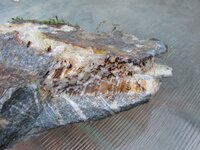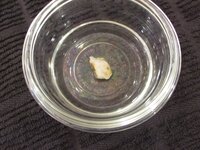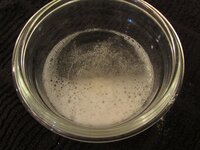brianc053
Hero Member
- Jan 27, 2015
- 987
- 3,443
- 🏆 Honorable Mentions:
- 3
- Detector(s) used
- Minelab Equinox 800
XP Deus 2
- Primary Interest:
- Metal Detecting
Hi everybody. I've been wondering about something and could use your help.
I've been visiting a stream in New England where there's slate bedrock exposed within a stream (technically a Brook), and the bedrock runs across the stream so it's your classic natural riffles. I've visited about 4 times so far and it always produces flour gold. It also produced a small picker that's shown in dvdtharaldson's "MA/VT/NH Panning" thread, page 33. So there's gold in this Brook.
Learning from KevinInColorado and WesternMassGold, I spent my latest trip there just prying apart the slate and since I only had a few hours on-site (before I had to attend to my day job) I collected the slate in buckets and brought it home.
I've started going through the slate and I'm finding specimens that have small (dime-sized) deposits of metals. I've attached a few pictures below; sorry for the poor quality, I'll work on that if people are interested.
Even with the fuzzy pics you'll probably notice that the metal deposits look like rust / iron. In some other samples (I haven't taken pictures yet) I'm finding a little seam of quartz here and there. This area has some large (6-12 inch wide) bands of quarts in places, also.
So here's my question, with a setup: I know there's gold in the stream, and I know there's metal deposits between the pieces of slate, so....is the gold coming from between the slate?
Thinking about it another way, if I pry apart enough of this slate will there be a decent chance of finding another little picker or a small seam of gold? Nature has been prying apart the slate for years - do you think that's what deposits the flour, flake and small picker gold in the stream?
Alternately, I'm aware that the gold in the stream and between the slate pieces could be glacial gold. But because I'm seeing these deposits of other minerals between the slate, I'm just wondering...are there more little pickers between those rocks?
I can't wait to hear your thoughts.
- Brian
Specimen #1
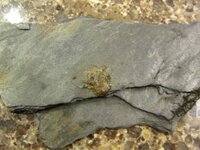
Closeup of #1
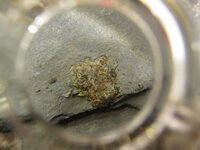
Specimen #2
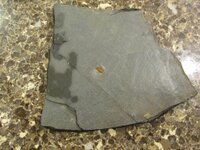
Closeup of #2
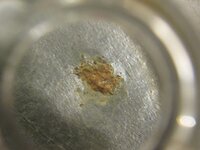
I've been visiting a stream in New England where there's slate bedrock exposed within a stream (technically a Brook), and the bedrock runs across the stream so it's your classic natural riffles. I've visited about 4 times so far and it always produces flour gold. It also produced a small picker that's shown in dvdtharaldson's "MA/VT/NH Panning" thread, page 33. So there's gold in this Brook.
Learning from KevinInColorado and WesternMassGold, I spent my latest trip there just prying apart the slate and since I only had a few hours on-site (before I had to attend to my day job) I collected the slate in buckets and brought it home.
I've started going through the slate and I'm finding specimens that have small (dime-sized) deposits of metals. I've attached a few pictures below; sorry for the poor quality, I'll work on that if people are interested.
Even with the fuzzy pics you'll probably notice that the metal deposits look like rust / iron. In some other samples (I haven't taken pictures yet) I'm finding a little seam of quartz here and there. This area has some large (6-12 inch wide) bands of quarts in places, also.
So here's my question, with a setup: I know there's gold in the stream, and I know there's metal deposits between the pieces of slate, so....is the gold coming from between the slate?
Thinking about it another way, if I pry apart enough of this slate will there be a decent chance of finding another little picker or a small seam of gold? Nature has been prying apart the slate for years - do you think that's what deposits the flour, flake and small picker gold in the stream?
Alternately, I'm aware that the gold in the stream and between the slate pieces could be glacial gold. But because I'm seeing these deposits of other minerals between the slate, I'm just wondering...are there more little pickers between those rocks?
I can't wait to hear your thoughts.
- Brian
Specimen #1

Closeup of #1

Specimen #2

Closeup of #2

Amazon Forum Fav 👍
Upvote
0



